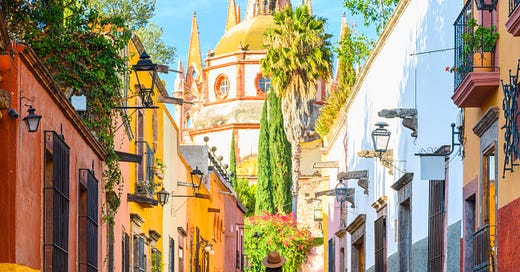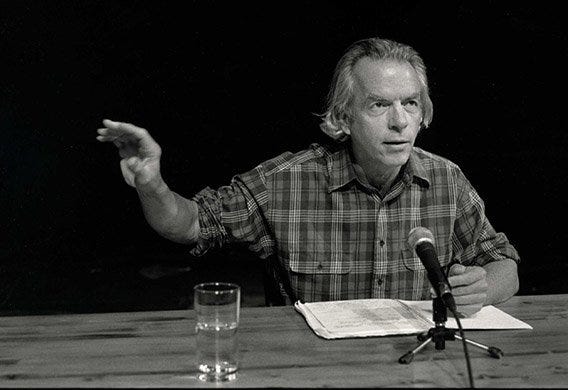Awakening in San Miguel de Allende
The dawn light in San Miguel de Allende spills across the cobblestones like liquid gold, pooling at the feet of the Parroquia de San Miguel Arcángel, the towering neo-Gothic church that feels as if it has always been here, watching. The first day of 2025 unfolds slowly, deliberately, with the city embracing the new year in a way that mirrors its timeless rhythm. There is no rush here, no clamor to get ahead—only the soft hum of life being lived.
San Miguel, a city nestled in the heart of Mexico, is known for its rich cultural heritage. It’s a place that has drawn artists and wanderers for decades, a crossroads of tradition and reinvention. Its charm lies in its contrasts: the bustling Mercado de Artesanías teeming with handwoven textiles and bright ceramics, the quiet courtyards hidden behind heavy wooden doors, the sound of Mariachi music spilling out into the streets as fireworks light up the night sky.
This morning, as I sit with my morning cup of matcha and take in all the sights and sounds of the town coming to life, I’m struck by the simple beauty of children’s voices—chasing each other in the plaza behind my house. Their laughter is untethered, a reminder of the pure joy that comes from being fully present. Parents linger nearby, unhurried, their faces reflecting a kind of ease I rarely see back in the United States. Fathers hold their infants with an effortless tenderness, and for a moment, I marvel at the quiet radicalism of this scene—a community that seems to value connection over productivity, relationships over rushing.
It’s these small details, the unspoken rhythms of this place, that set San Miguel apart. Every gesture, a shared humanity, reminders that care, love and connecteness are not bound within a race to the top. This is a city that invites you to slow down, to notice, to linger. And as I sit here, soaking it all in, I wonder: how do I carry this ethos back with me to Portland, Oregon, where the pace of life so often feels rushed and disconnected—everyone in a race to the next moment?
The Dichotomy of Two Homes
To call two places “home” is to live in perpetual tension, a kind of constant negotiation between belonging and estrangement. For me, San Miguel de Allende offers a grounding simplicity—a sense of being rooted in the present. Portland, on the other hand, often feels like a city suspended in motion, always chasing the next thing. It’s a place that prides itself on innovation, creativity, and ambition, but sometimes, that drive feels like a centrifugal force, spinning people away from one another.
In San Miguel, time seems to stretch. Families gather in the jardin as though they have nowhere else to be. Conversations linger, unhurried, weaving their way through the afternoon like the scent of freshly baked pan dulce. In Portland, time compresses. Even moments of leisure often feel scheduled, as though rest is just another task to check off the list.
This dichotomy echoes a line from Thornton Wilder’s Our Town, a play that feels particularly poignant as I reflect on the rhythms of these two homes. Emily, the play’s protagonist, asks, “Do any human beings ever realize life while they live it—every, every minute?” The answer, of course, is no. But in San Miguel, it feels as though people come closer to that realization, living more fully in the spaces between beginnings and endings.
Spalding Gray wrestled with this same tension in Morning, Noon, and Night, his meditation on fatherhood and the fleeting nature of time. He writes, “Living in the moment—truly being present—feels both deeply profound and impossibly fleeting.” Gray’s words resonate as I think about the challenge of carrying the stillness of San Miguel back to the whirlwind of Portland. How do we hold onto the beauty of the present moment without being swept away by the relentless pull of what’s next?
The Apprentice and What Lies Ahead
This afternoon, I’ll be watching The Apprentice, a new film that examines the early years of Donald Trump. It’s an eerie way to begin the new year, reflecting on a man whose choices have shaped not only his own destiny but also the course of an entire nation.
Trump’s story is one of squandered potential, a man born into immense privilege who chose power over principle, spectacle over substance. With the freedom to craft himself into any version of a man, he built a persona steeped in deceit and dominance. He could have been a figure of generosity, a steward of the immense resources he inherited, but instead, he cultivated a brand of divisiveness that has left deep scars on the fabric of society.
As I think about Trump’s choices, I’m reminded of the ripple effect that each of us creates through our actions. It’s a theme explored in the works of Viktor Frankl, whose Man’s Search for Meaning delves into the profound impact of human agency. Frankl writes, “Between stimulus and response, there is a space. In that space is our power to choose our response. In our response lies our growth and our freedom.” Trump’s story, in many ways, is a cautionary tale about what happens when we neglect that space, when we choose the easier path of self-interest over the harder path of growth and responsibility.
Literary Echoes: Spalding Gray’s Legacy
Spalding Gray was a master of turning the deeply personal into something universal. Best known for his monologues like Swimming to Cambodia and Gray’s Anatomy, he combined humor, vulnerability, and a razor-sharp observational eye to capture the absurdities and profundities of life. His work is a reminder that the most extraordinary stories often lie in the seemingly ordinary moments.
In Morning, Noon, and Night, Gray reflects on fatherhood with both wonder and trepidation, chronicling the ways his son Theo forces him into the present moment. It’s a tender, often hilarious exploration of what it means to care deeply for another human being. And yet, Gray’s life ended in tragedy, a stark contrast to the warmth and vitality of his work. In January 2004, he took his own life by leaping into the icy waters of New York Harbor, leaving behind a legacy of brilliance tinged with sorrow.
Gray’s story resonates deeply with me, not only because of his artistic genius but because of the tension he embodied: the push and pull between the joy of being alive and the weight of existence. It’s a tension I feel keenly as I sit here in San Miguel, reflecting on the year that has passed and the one that lies ahead.
On Grabbing Hold and Letting Go
In San Miguel de Allende comes fully to life on this first day of a new year, the plaza fills with music and laughter—a reminder that life is both fragile and resilient. This city, with its vibrant colors and timeless rhythms, feels like a lesson in itself—a call to live more fully, to connect more deeply, to slow down and savor the beauty of the moment.
Trump’s story is a warning about the consequences of thoughtless ambition, while Spalding Gray’s legacy is a testament to the power of presence and vulnerability. Together, they form a kind of compass, pointing us toward a life lived with greater intention.
As we step into 2025, I hope to carry the lessons of this place—the simplicity, the connection, the quiet strength of being present—back with me. And I hope to leave ripples of my own, small acts of generosity and care that might echo outward in ways I can’t yet imagine.
Because in the end, it’s these choices—the ones we make every day, in the spaces between beginnings and endings—that shape not only our own lives but the world around us.
If every day is the first day of the rest of our lives, let’s make 2025 meaningful.





